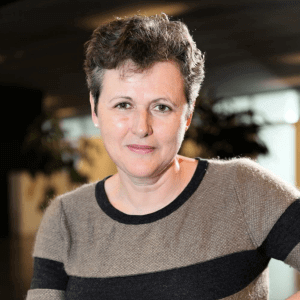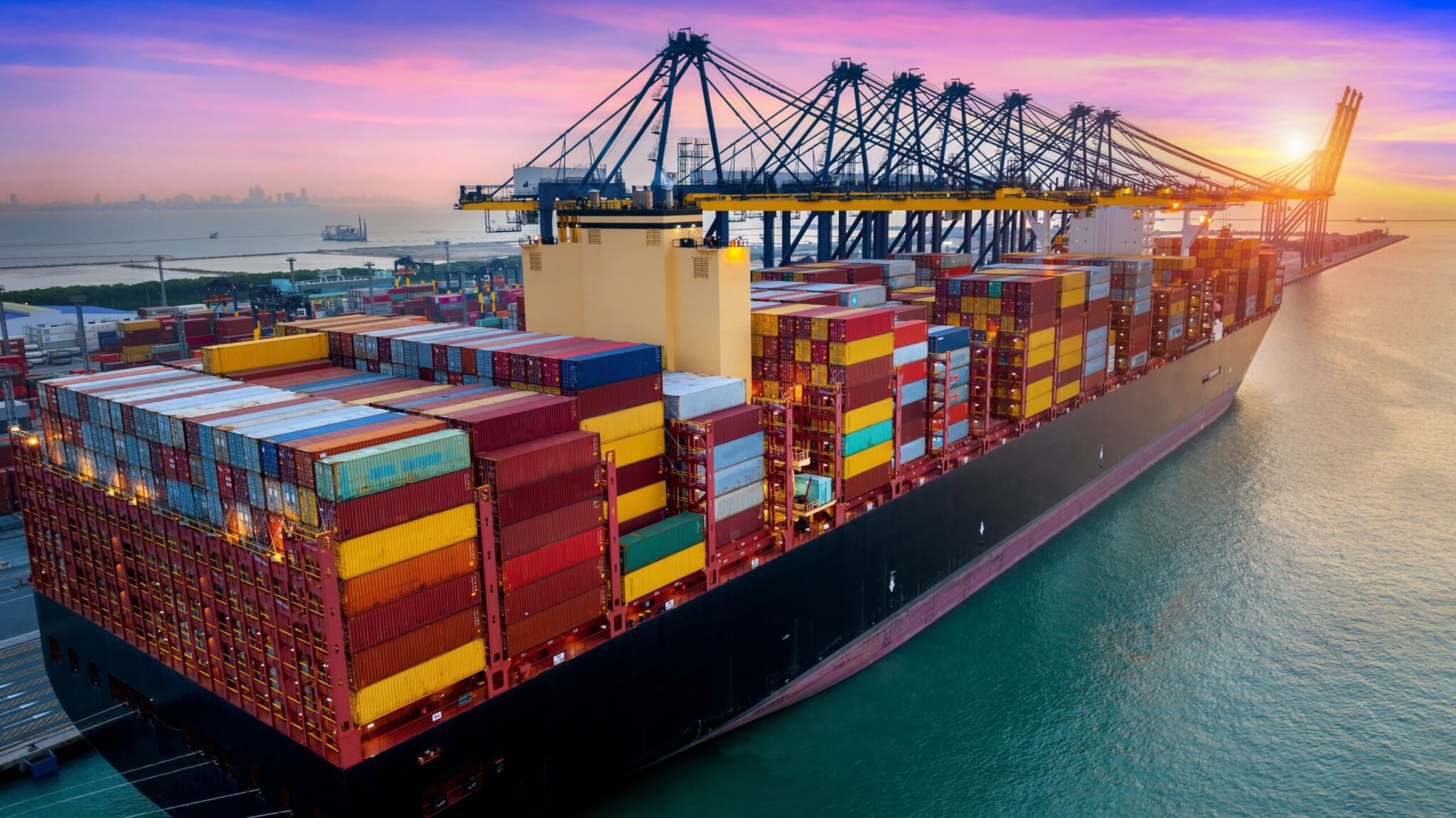
Covering all greenhouse gases and myriad mitigation opportunities by sector and geography, Achieving global climate goals by 2050: Pathways to a 1.5° C future, answers “what-if” questions to reveal a nuanced story about the linkages and trade-offs inherent in climate action. This updated climate modeling report, based on open-source data, is an essential analytical tool for funders and anyone advancing climate solutions and is a follow-up to an inaugural report published in 2020.
In 2015, countries around the world adopted the landmark Paris Agreement on climate change, with the goal to limit global temperature rise to below 1.5° C relative to pre-industrial levels. Research consistently suggests that this will require halving global greenhouse gas (GHG) emissions by 2030 and reaching net-zero CO₂ emissions by 2050 — targets that necessitate rapid, transformative action on a global level.
There has been important progress since the signing of that landmark pact, but the world remains off track from meeting critical climate milestones. In our work with the philanthropy and climate solutions communities, we field many “what-if” questions: How can investing in one climate solution create benefits that help to accelerate progress across multiple sectors or geographies? How will emerging technologies — or the lack thereof — impact our ability to meet 2050 net-zero goals?
To answer these “what-if” questions, we partnered with leading climate researchers at the Pacific Northwest National Laboratory (PNNL) to model the linkages and trade-offs of climate investments. This research underpins the climate strategies we co-create with our funders and grantees. We are excited to make it available as a resource for the broader climate solutions community as we work collectively to advance transformational climate action.
The report provides readers with an overview of the solution space for climate change mitigation. It serves as a portfolio analysis tool to help funders and the broader climate solutions community understand how emissions reduction opportunities are distributed across sectors and geographies — and the transformations needed to achieve 1.5° C targets.
For those interested in engaging on a more technical level, we have made the report’s underlying data freely available to allow for a more detailed and informative discussion on how a 1.5° C pathway might be achieved.
Mitigation opportunities by sector and geography
“Achieving global climate goals by 2050” identifies priorities for emissions reductions across 10 geographies within electricity, fuel supply, transport, buildings, industry, land use, agriculture, and carbon dioxide removal. This report uses a range of climate scenarios developed with the open-source Global Change Assessment Model (GCAM) and designed in partnership with PNNL and program experts at ClimateWorks Foundation. The report provides detailed information on how deep transformations across various sectors can help put the world on a path to a climate-safe future.
Figure 1 indicates significant annual emissions reductions by 2050 — about 70 gigatons of carbon dioxide emitted (GtCO₂e) according to the Central scenario and a range of 61 to 70 GtCO₂e according to the Ensemble scenario — in line with what is needed to limit temperature rise to 1.5° C.

The report also highlights the countries and regions where emissions reductions can take place, with nearly 80% of emissions reductions needed by 2050 being possible in China, India, the United States and Canada, Europe, Africa, Southeast Asia, and Brazil.
New for 2023: An Ensemble of scenarios and open-source data access
For the first time, this report highlights an Ensemble of scenarios that considers a balance of approaches and reveals additional nuance, linkages, and trade-offs inherent in any climate change mitigation strategy. Specifically, the Ensemble focuses on the pace and deployment of six key parameters: bioenergy, carbon capture and sequestration, carbon dioxide removal, electrification for road transportation, nuclear generation, and renewable energy generation.
This Ensemble of scenarios can help answer a variety of “what-if” questions about the use of different technologies or the pace of deployment. In other words, as part of refining a broader climate strategy, readers can reference the Ensemble to help determine the various potential trade-offs of prioritizing certain sectors or interventions over others — and the pathway implications of such choices on achieving 1.5° C targets by 2050.
Additionally, we made the report’s data freely available so the climate research community can use the tools we developed in partnership with PNNL to track the distribution of global emissions by source, sector, and end-use (see Figure 2 for example). The datasets are available for download on the ClimateWorks website.
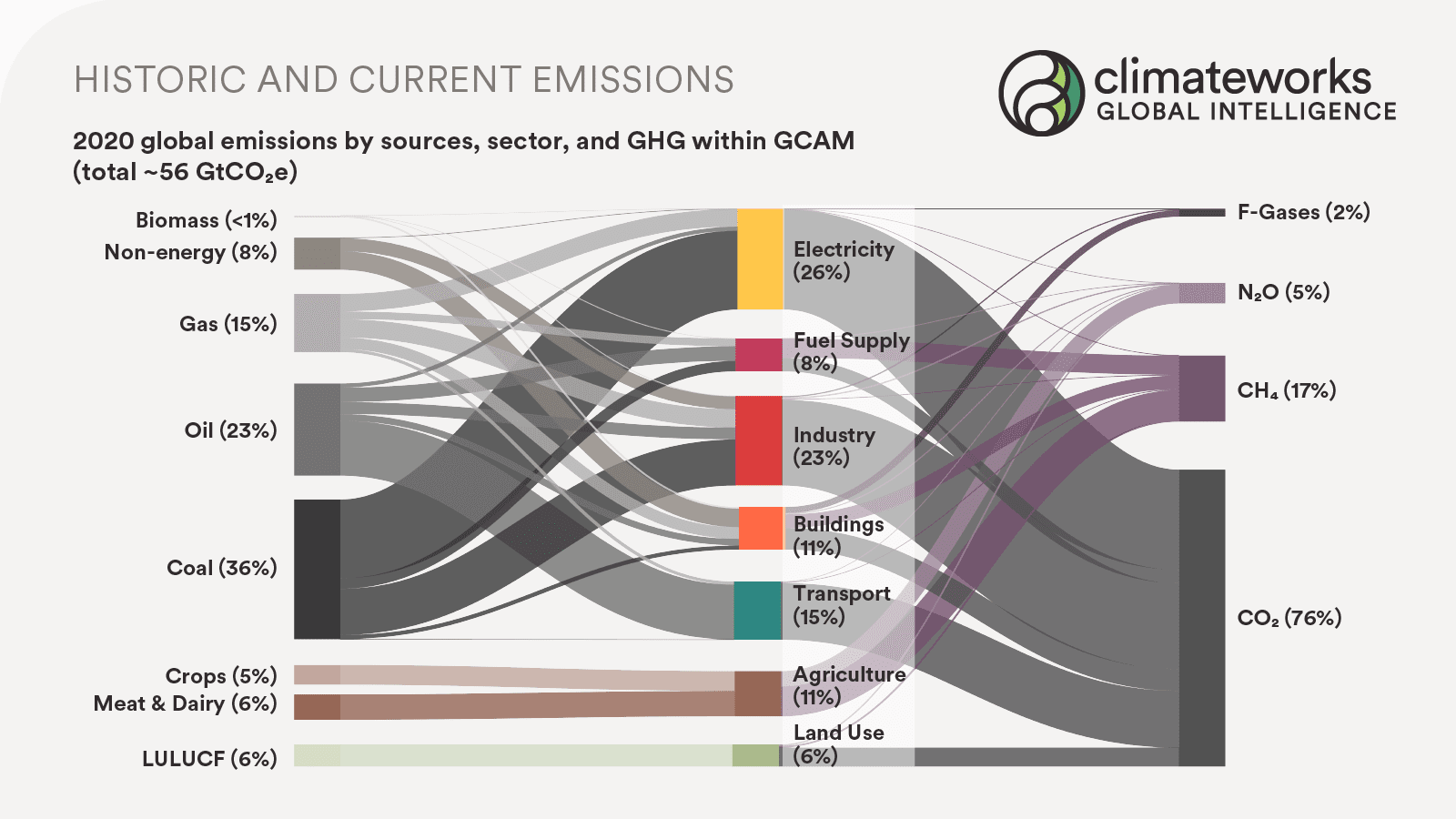
How to develop a well-informed climate change mitigation strategy
Currently, the world is falling behind on efforts to meet the Paris Agreement’s primary goal to limit global temperature rise to below 1.5° C — a target that will require achieving net-zero CO₂ emissions by midcentury. The climate solutions community can use the findings highlighted in “Achieving global climate goals by 2050: Pathways to a 1.5° C future” to consider the broader landscape of opportunities for emissions reductions across sectors and geographies — as well as the interdependencies and trade-offs between them.
Read the full report, Achieving global climate goals by 2050: Pathways to a 1.5° C future.
Contact ClimateWorks to learn more about climate change mitigation opportunities, how to develop a climate strategy, or how we model our scenarios.

Future development will be built with cement. LC3 provides the opportunity to support self-determination and combat climate change — and philanthropy can help accelerate its deployment.
Cement is the most common building material in the world. Nearly 9,000 pounds of concrete — cement combined with an aggregate such as gravel, crushed stone, or sand — is produced per person per year on average, and its use is increasing rapidly. About half of this concrete is used for roads and infrastructure and the other half for buildings. It is a critical material for meeting growing housing and infrastructure needs in emerging economies worldwide.
Unfortunately, due to the enormous amounts produced, the most common type of cement, known as ordinary Portland cement (OPC), contributes significantly to climate change, comprising approximately 8% of total global carbon emissions. Given the Paris Agreement calls for a 50% reduction of global emissions by 2030, the need to decarbonize the cement industry is urgent.
One central strategy for reducing the emissions intensity of cement involves using supplementary cementitious materials (SCMs) such as fly ash and slag — byproducts from burning coal and refining iron ore — to displace a percentage of the cement. However, these materials are becoming increasingly scarce and expensive, and are already almost fully utilized. There are several next-generation cement technologies under development, but they will not be commercially viable or globally scalable in time to meet the Paris Agreement’s 2030 targets.
There is a solution, however, that can help meet the need for immediate emissions reduction: the use of a low-carbon alternative building material known as Limestone Calcined Clay Cement (LC3). Currently, LC3 is the only cement available for deployment at scale for decarbonizing this industry. Achieving Paris Agreement targets will require producing millions of tons of LC3 before the end of the decade, at a minimum.
LC3: a scalable low-carbon solution for the cement industry
The most carbon-intensive part of cement is the production of clinker, which requires heating limestone to very high temperatures (around 1450° C) to make the material reactive. Producing clinker releases carbon dioxide (CO2) in two ways: first, it burns fuel (usually coal) to reach the desired temperature. Second, even more CO2 (around 60% of emissions) is released when limestone is chemically broken down — more specifically when CaCO3 turns into calcium oxide (CaO) and CO2. A January 2023 explainer from ClimateWorks provides an overview of cement’s climate impact.
LC3 addresses both these sources of CO2 emissions. First, it replaces half of the carbon-intensive clinker with calcined clay and ground limestone, neither of which have process emissions. Second, the clay is calcined at a much lower 800° C, which reduces emissions and uses less expensive energy. LC3 can reduce CO2 emissions by up to 40% compared with OPC. Additionally, calcined clay reacts with lower-grade limestone, which simplifies access to raw materials for making LC3. Figure 1 below illustrates the significant CO2 savings obtained by replacing clinker with calcined clay and limestone.
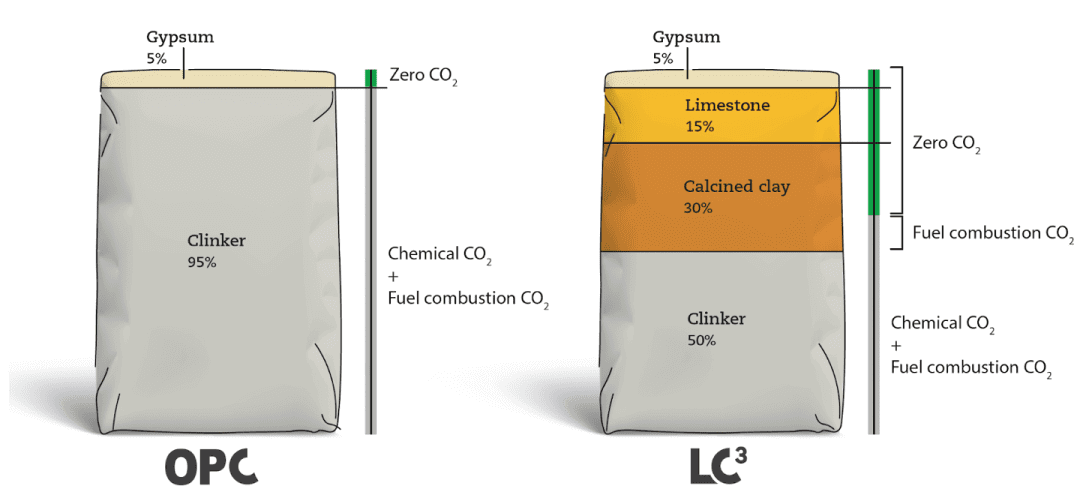
As a concrete example, if the 768-meter-long Madre Laura Bridge in Colombia were built with LC3 rather than OPC, it would have saved 9,240 tons of CO2 — equivalent to 15,500 passengers flying from San Francisco to New York City. If the cement industry widely adopts the use of LC3, this technology can help prevent up to 500 million tons of CO2 emissions per year by 2030. That figure is expected to increase as research advances and as LC3 potentially replaces even larger amounts of clinker.
A potential game-changer for durable infrastructure
Overall, LC3 performs equivalently, lasts longer, and is a more cost-effective and dramatically more climate-friendly option than conventional cement. Compared with OPC, LC3 provides excellent early strength, similar to typical concrete mix designs, which means it will not slow down construction schedules. After just 7 days, LC3 performs better than conventional cement, and it maintains parity through 90 days, as shown in Figure 2.
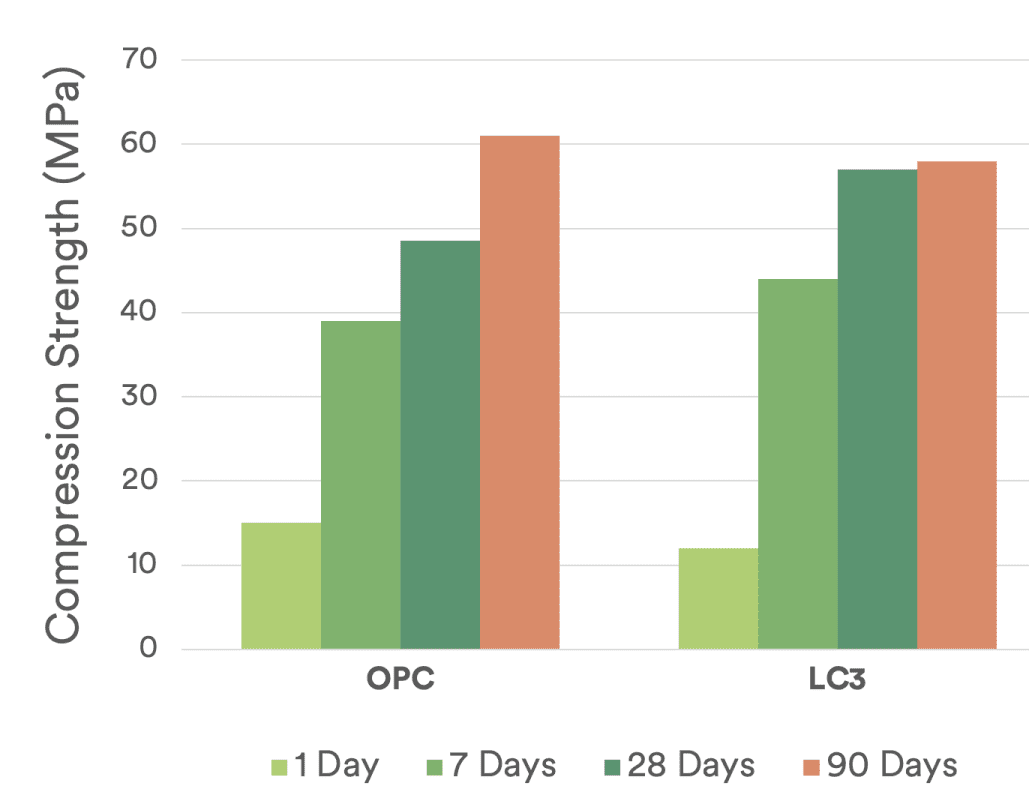
LC3 has a high chloride penetration resistance and presents a dense microstructure with high surface resistivity, which makes it ideal for harsh marine and desert environments. It is also less pervious, which means that water and salts do not get into the concrete to cause cracks and deterioration. Blocks of concrete made with LC3 have been tested in the ocean on the shores of Cuba for nearly 10 years now and show no sign of corrosion.
These characteristics make LC3 a potential game-changer for more durable infrastructure. For example, in Louisiana, where there are many roads and bridges in saltwater marine environments, LC3 performs well on resistance tests to demonstrate imperviousness as required by the Department of Transport (DOT). Tom Van Dam, a civil engineer working with state DOTs, explains that “LC3 creates more durable concrete, meaning freeways and other infrastructure will last longer, and it installs just like regular concrete, using the same equipment and techniques. It’s an urgent solution to reduce emissions quickly.”
The next boom in construction: The Global South
Today, more than 1 billion people are inadequately housed and the need for construction will only increase due to urbanization and population growth in the coming decades. The majority of new construction will occur in the Global South, as illustrated in Figure 3. This trend will accelerate due to the enormous needs of emerging economies in Asia and especially in Africa, where the population is expected to increase by 1 billion by 2050.
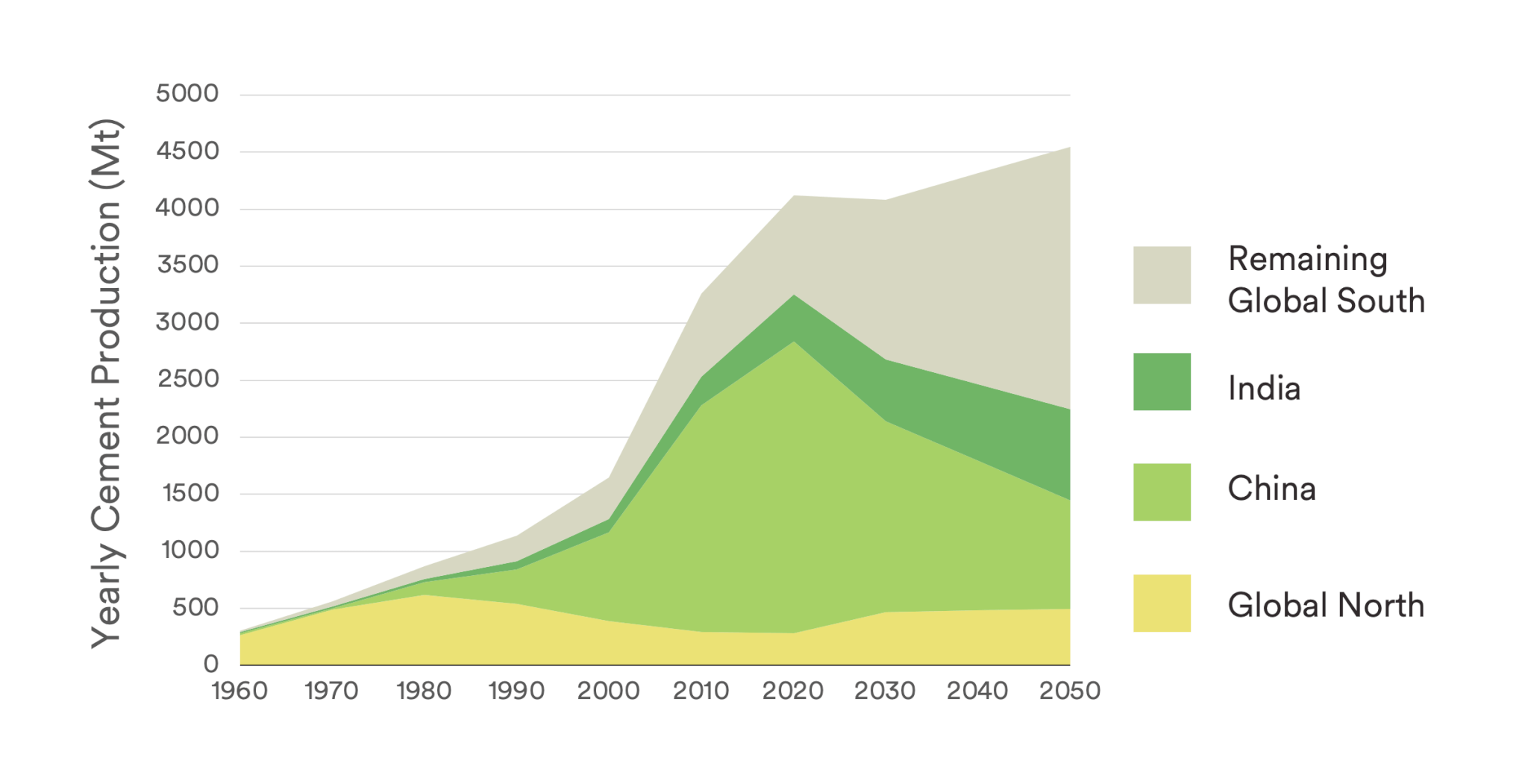
Fortunately, clays are the weathering products of all rock types. As a result, they are widely available close to the Earth’s surface in all geological settings. Clays that contain kaolinite, which are the most suitable clay types for LC3, are abundantly available in countries in the Global South (see yellow areas in Figure 4). These regions are where most of the increase in demand for cement is forecasted to occur, and the use of locally available material will provide major economic and climate benefits.
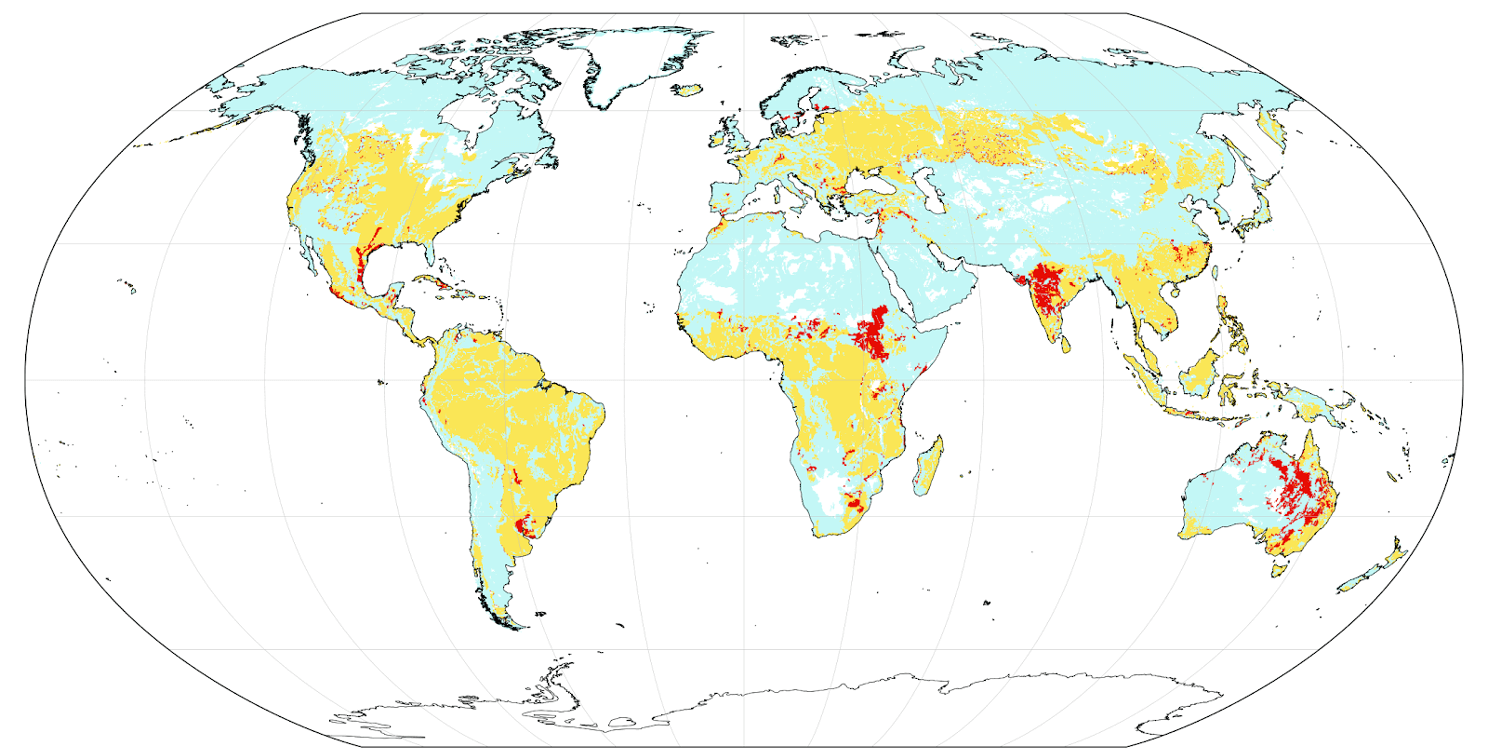
A critical moment for scaling up LC3 deployment
LC3 is a well-known and proven solution. The critical task now is to demonstrate to cement producers that there is demand for the product — and to encourage designers, owners, and contractors to ask for this low-carbon alternative. Conveniently for cement producers, switching to producing LC3 only requires minimal changes to infrastructure in existing plants, making the operational transition straightforward and low-cost. At least seven companies currently produce LC3, including Argos in Colombia, Holcim in France, and Ash Grove in the United States, with more than 20 additional companies expected to follow.
“We are now producing LC3 in our standard rotary cement kiln and we’re planning to expand rapidly,” says Cheng Qi, Ash Grove Technical Center Director. “More than 100 power plants have stopped burning coal, making the availability and quality of SCMs like fly ash decrease. Calcined clay cement is the gold standard for durability used on freeways in the Northeast.”
A critical challenge is getting the many relevant parties — cement producers, building owners, architects, engineers, code authorities, and contractors — to take a broader perspective focused on transforming the entire building industry. The design and construction community has historically focused on the one project they are working on at a given time. To meet global climate goals, there needs to be a shift in mindset towards transforming the industry as a whole, not just producing exceptional one-off structures. This requires a focus on transformative materials that are affordable and can scale globally rather than hypothetical replacements for cement that are not yet affordable or ready to commercialize around the globe.
One key approach for transitioning to low-carbon building materials is to generate enough demand and incentives to change the status quo. In recent years, several policy advancements have helped create these incentives, especially in the United States. At the federal level, public funding from the Inflation Reduction Act provides a critical leverage point to transform the industry toward materials with significantly lower embodied carbon. Likewise, Buy Clean policies require the procurement of low-carbon materials on public construction projects. At the state level, policies such as the New Jersey Low Embodied Carbon Concrete Leadership Act (LECCLA) encourage innovative new low-carbon mix designs with financial incentives, while California’s SB596 calls for detailed road maps to get to net-zero cement by 2045.
Philanthropy can play a critical role in providing initial investment and education to help move the sector toward a low-carbon future. Additionally, philanthropy can serve as a convener by bringing together various actors in the building industry that typically do not interact with one another. These efforts create opportunities to share the latest research and developments in the field and provide venues for honest exchanges on how to collaborate, answer questions, and overcome challenges. Philanthropy can also facilitate testing and demonstration projects to provide hands-on experience with LC3, increasing confidence across the entire value chain.
Responding to climate change involves swift action on a global scale. Achieving the emissions reduction targets outlined in the Paris Agreement will require all sectors — including the buildings sector — to make revolutionary changes. LC3 is a well-proven solution for decarbonizing the cement industry that uses existing production infrastructure and is globally available. Now is the time for an all-out deployment.

Harmful carbon dioxide emissions can remain in the atmosphere for centuries. Along with cutting new greenhouse emissions, scientists say it is crucial that we remove this historical CO2 from the air and oceans in order to restore our climate. This natural or technological process of filtering excess carbon dioxide pollution out of the air and finding sustainable methods of storing carbon is called carbon dioxide removal (CDR). Although the public understanding of CDR is often limited and a few key technologies like direct air capture are the most well-known, there are a variety of different CDR approaches that can be used to effectively address the climate crisis.
The IPCC has deemed CDR essential to limiting global warming to below 1.5° C. This means that we not only need to bring emissions to zero, but also to remove historic emissions already in the air and ocean. As a relatively new climate action space, the interactions of different CDR approaches with land, water, and energy vary based on the approach. For some CDR approaches (like restoring or protecting forests), the impact is well understood and known. For other newer technologies under development, the interactions are not as well understood. Moreover, we also must explore how CDR approaches complement a fuller portfolio of mitigation actions.
A new study conducted by the Pacific Northwest National Laboratory and co-developed with ClimateWorks, published in Nature Climate Change, addresses these knowledge gaps by incorporating the latest science and a fuller portfolio of CDR approaches into integrated assessment modeling. The study expands the portfolio of CDR options beyond bioenergy with carbon capture and storage (BECCS) and land-based CDR approaches (e.g., reforestation) referred to simply as land-use change (LUC). The portfolio of approaches now includes direct air capture with carbon storage (DACCS), enhanced weathering (EW), biochar, and direct ocean capture with carbon storage (DOCCS).
The study provides further clarity on 1) whether the 1.5°C climate goal is achievable without CDR by maximizing ambitious mitigation actions; 2) the function of a suite of CDR approaches within climate action; and 3) how a diverse set of CDR options interacts with land, water, and energy considerations. To accomplish this, we incorporate this fuller portfolio of CDR options and provide multiple pathways that differentiate the levels of use, thus revealing tradeoff considerations.
Approximately 10 gigatons of CO2 (GtCO2) removal per year might be needed globally, even with deep technology and behavioral changes such as rapid electrification, higher material efficiency, and lower population growth. Despite such concerted efforts, residual emissions remain stubbornly high. More than 60% of these residual emissions necessitating CDR came from non-CO2 greenhouse gasses that are prohibitively difficult or impossible to mitigate. Essentially, marginal gains in climate action will require proportionally larger and more fundamental efforts.
Early action in emissions reduction and scaling up a balanced portfolio of CDR approaches will help reduce cumulative removal needs and limit potentially unfavorable tradeoffs between resources. By introducing new CDR options, this study demonstrates an approach to place significant limits on the overuse of BECCS and afforestation — areas of concern in earlier CDR assessments, as both approaches are land-consuming, which could risk biodiversity and competition with water and food. Notably, even with limited BECCS, the water needed for irrigating bioenergy crops can remain significant at 3% of global water consumed.
Our approach of evaluating simultaneous technology and behavioral changes while also limiting the deployment of BECCS and afforestation does present a set of tradeoffs to consider. For example, by limiting the use of bioenergy, demand for other CDR options like DACCS rises. By 2050, energy requirements for technological options could make up as much as 3% of total final energy consumption depending on the region. DOCCS, as a nascent technology and with a high cost per ton today, makes up less than 1 million tons of removal but has higher potential when coupled with seawater desalination. This in particular will benefit arid regions when surface and groundwater resources become scarcer in a warming world. Biochar’s removal potential is estimated at 200 MtCO2 per year by 2050 with the largest potential in India and West Africa. Given current data, enhanced weathering (EW) might provide the most cost-effective CDR services, eliminating as much as 4 GtCO2 per year by 2050. Furthermore, EW can be distributed across diverse geographies, notably in China, the United States, India, Brazil, and the European Union.
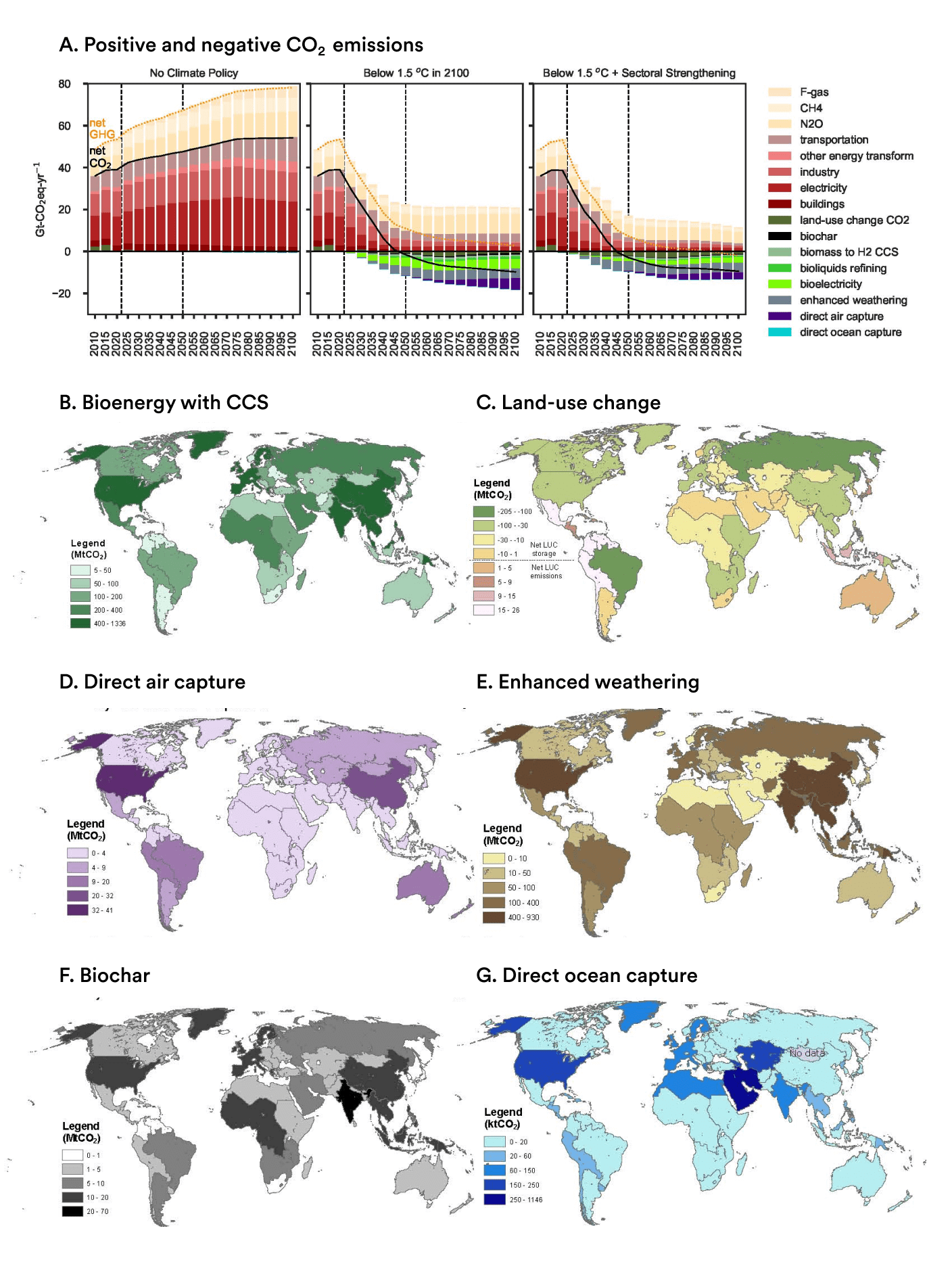
Our findings demonstrate that a wider portfolio of CDR options could be implemented across geographies, thus reducing reliance on any single contribution. Some geographies might deploy multiple CDR options at scale — the United States and China, for example, are expected to be significant contributors. Meanwhile, other regions might specialize in particular sets of CDR options.For example, BECCS, biochar, and enhanced weathering may be particularly suited for Sub-Saharan given its geology and endowments. Such regional differences and their implications remain an important area of research as the current resource distribution in this study is not representative of conscious economic development and environmental justice choices. Since it is possible for a country’s economy to change rapidly, comparative advantages in the distribution and uptake of CDR options will look different over time. Furthermore, responsible deployment requires thoughtful collaboration with local communities while prioritizing local environmental justice concerns and goals.
Currently, many national and corporate decarbonization strategies reference CDR but lack specifics on removal methods, quantitative details, and consideration of appropriate use and tradeoffs. Further research is needed to incorporate a full range of CDR approaches, their potential impacts on energy, water, and land systems, and their deployment realities based on mitigation successes. This study takes a step in this direction by representing a framework that incorporates more options, but more information and collaboration are required to fully embed understanding and uptake of the growing list of CDR options. Philanthropy can play a critical role in addressing these knowledge gaps by supporting the responsible CDR research needed to serve important climate objectives and accelerate deep decarbonization.

Transportation electrification is at the forefront of climate action and energy security in India, as road transportation comprises 90% of the country’s transport emissions. Currently, India has ambitious targets and policy pathways laid out under the Faster Adoption and Manufacturing of Electric Vehicles (FAME) I and II umbrella and associated schemes like the Production Linked Incentives (PLI) for electric vehicles and components. These programs largely target two- and three-wheelers, passenger cars, and buses. However, the rapidly rising demand for road freight has elevated the importance of decarbonizing the heavy trucking segment.
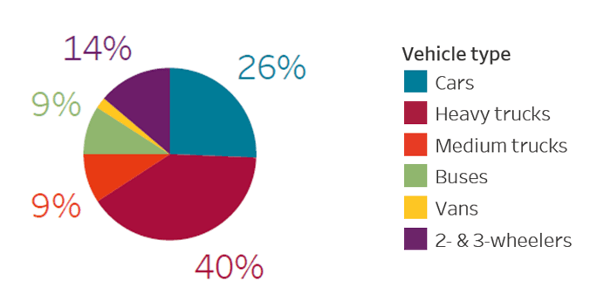
In India, medium- and heavy-duty trucking account for only 2% of vehicles on the road but contribute 40% of the total road transportation emissions — more than any other vehicle segment — due to factors such as higher fuel consumption. Globally, less than 1% of medium- and heavy-duty trucks on the road today are zero-emission vehicles, but that is changing quickly in regions with policy support.
With the right mix of policy, regulation, and private- sector engagement, the transition to zero-emission trucks (ZET) can bring multiple economic and environmental benefits. Recent research conducted separately by Lawrence Berkeley National Laboratory (LBNL) and the Climate Group highlight how accelerating the transition to zero-emission trucks can yield economic, environmental, and energy security gains for India.
A win-win opportunity for climate and energy security
Recent improvements in battery costs and energy density have created new opportunities for truck electrification, which were previously not feasible. LBNL’s recent study, “Freight Trucks in India are Primed for Electrification” (October 2022), analyzed the economic and environmental potential of truck electrification through an estimation of production and operation costs based on international battery prices. The results show that when deployed at scale, battery electric trucks can have a lower total cost of ownership compared to diesel trucks across multiple weight classes. Battery electric trucks will have lower fuel costs and more stable fuel prices, a benefit to the trucking industry. Additionally, diesel trucks currently consume 57% of the petroleum used for transportation in India, the majority of which is imported, whereas electric trucks can take advantage of increases in renewable and domestically produced power.
As battery electric trucks replace diesel freight, the climate and local pollution benefits will increase. At the current average grid emissions intensity for India, battery electric trucks can reduce the greenhouse gas intensity of freight by 9% to 35% across different classes of trucks when compared with diesel. The emission reduction benefits of electric trucks will increase in the future as the Indian power grid is projected to become significantly cleaner with 2030 renewable energy targets. Importantly, battery electric models also eliminate air pollution along highways and congested areas. Given that India will add increasing amounts of renewable electricity to its grid, the environmental benefits of electric trucks will only increase over time.
Policy and finance as the accelerators
The LBNL study shows that the commercial viability of the battery electric trucks industry will require sustained policy support. Soon, electric trucks will be less expensive to purchase, fuel, and maintain than diesel or petrol trucks, providing significant economic benefits. Initially, however, electric trucks may have higher upfront costs and, in some cases, higher total cost of ownership compared to diesel trucks. To address this, the existing PLI scheme could be supplemented with additional policies. These could include sales requirements and/or commitments by truck manufacturers and large fleet owners to induce a growing quantity or share of battery electric trucks annually. California’s Advanced Clean Trucks (ACT) regulation exemplifies this approach and underscores the importance of decisive government, civil society, and industry action.
These measures will create certainty for investors and the economies of scale needed to stimulate a positive feedback cycle of higher deployment and lower costs. For example, India has successfully leveraged renewable purchase obligations to achieve significant deployment of low-cost renewable energy. It is now time to consider how a similar approach could help reduce dependence on diesel for trucking.
Making financing available and easily accessible will also be crucial for advancing clean trucking objectives. This is because trucks in India are typically financed and rarely purchased outright. Governments, banks, and other financial institutions can play a role in providing access to low-cost capital and financing options for the upfront cost of electric trucks. This is even more important given imbalanced ownership patterns: only 30% of Indian trucks fleets are medium and large fleet operators, yet they own 70% of freight trucks, while small fleets of less than six trucks account for just 30% of trucks but are 70% of the fleets in operation.
Galvanizing demand-side action
The transition to zero-emission trucks in India requires catalytic action from consumers, investors, and corporate actors. For example, as businesses in India strive to reduce their indirect emissions (also known as scope 3), early adopters could take advantage of freight electrification. The Climate Group’s analysis, “Early market outlook report – Electrification of medium and heavy-duty trucks in India” (October 2022), shows that two trucking segments have the greatest share of on-road trucks: parcels and consumer goods deliveries (~45% of trucks), followed by perishables (~18%). Companies that are big freight users like these that generally employ a third-party logistics provider can influence the service they demand to enable the switch to electric trucks.
To enable this action, the Climate Group launched the EV100+ initiative to bring together companies committed to a 100% shift to zero-emission medium and heavy-duty electric vehicles by 2040. JSW Steel, a leading steel producer, is the first company in India, among five other global companies, to pledge to EV100+. Other companies include IKEA, Unilever, A.P. Moller-Maersk, and GeoPost/DPD group, all of which are among the world’s top consumer goods, shipping, and logistics companies.
Such pledges can translate to breakthroughs, as the Climate Group study asserts that the first offshoots of a switch from diesel to cleaner trucks is already attractive today in certain trucking use cases, and these applications will demonstrate clear feasibility. Such use cases could emerge as early-transition beachheads and garner interest among truck consumers and manufacturers alike.
Philanthropy can help shift electric trucks into the fast lane
Partnerships and collaborations across the trucking supply chain — including truck and battery manufacturers, fleet operators, and charging infrastructure providers — will be key to creating a viable clean trucking market. These collaborations, along with increased public-private engagement, will catalyze the deployment of zero-emission trucks in India. Philanthropy can help create an enabling environment for such collaborations. Additionally, as the LBNL and Climate Group studies show, research can help provide a clearer understanding of the pathways and policies to lowering the total cost of ownership, creating economies of scale, and building investor confidence in the clean trucking segment. Philanthropy can play a vital role in supporting institutions at the forefront of bridging additional knowledge gaps.
India’s decarbonization journey is consistent with its overarching development goals and is rooted in the imperative to provide jobs, ensure energy access, and improve the quality of life of 1.4 billion citizens. Shifting from dirty diesel to clean, zero-emission trucks lies at the intersection of employment, climate mitigation, and improved public health. Philanthropic initiatives can provide support across these objectives and facilitate global information-sharing to unlock policy and financial tools for emerging technologies like battery electric trucks.

“It was young people who moved climate change to the front of the global agenda,” said UNFCCC Executive Secretary Simon Stiel on the eve of the recent COP27 climate summit in Egypt. Stiel’s words came as hundreds of young people gathered in Sharm el-Sheikh to raise their voices and call for more rapid climate action and a more just world.
The recent wave of youth-led climate justice action has emerged extremely quickly. Only 13 months after Greta Thunberg’s first solo strike at the Swedish Parliament in August 2018, more than 7 million young people were participating in climate protests in more than 140 countries around the world. While Covid-19 put the brakes on street-level protests, the movement has continued to evolve — asserting the need for urgent climate action, giving new traction to climate science, establishing a new and salient political constituency, and embodying the need for an intersectional and justice-focused approach.
In Europe, the wave of youth-led protests during 2018 and 2019 contributed to a Green Wave, which culminated in the best-ever results for Green candidates in the May 2019 European Parliament elections. Youth organizing helped persuade decision-makers to develop the European Green Deal. Meanwhile, in the United States, the work of the Sunrise Movement and other youth organizers helped push climate change to the fore as an issue in the 2020 U.S. presidential election cycle, which led Democratic candidates to adopt the most ambitious climate platforms to date and paved the way for the historic Inflation Reduction Act and other legislative action on climate.
The energy from this youth-led organizing has helped to revitalize the wider climate movement. Like their political counterparts, leaders in climate philanthropy are increasingly acknowledging the power of youth action, which has contributed directly to many of their priorities — including inside track advocacy, climate finance campaigning, strategic litigation, and opposition to new fossil fuel projects.
Youth-led climate justice initiatives remain severely underfunded
Given this momentum, how much and how well is philanthropy investing in youth-led climate justice movements? Over the last few months, The Hour Is Late has collaborated with a group of young climate leaders (initially brought together by U.N. Secretary-General António Guterres in his first Youth Advisory Group) in a bid to answer these questions, with funding support from the Children’s Investment Fund Foundation. Outputs from this collaboration — based on desk research and interviews — are available on the Youth Climate Justice Study website.
Our research reveals that foundation giving to youth-led climate justice initiatives is extremely limited — accounting for just 0.76% of climate mitigation funding from the world’s largest climate foundations across the three financial years 2019, 2020, and 2021.
This figure is based on The Hour Is Late’s analysis of grants data gathered by the ClimateWorks Foundation Global Intelligence team and is consistent with findings from a deep dive into European climate mitigation funding published in October 2021.
In the United States, grants to youth-led climate justice work represented only 1% of all funding for U.S.-based climate mitigation work. Together, the “top 10” climate grantees in the United States (many of them ‘Big Green’ environment groups based in Washington D.C.) received 20 times as much funding as was directed to youth-led climate organizing.
Nonetheless, the amount of available funding in the United States for youth-led work still dwarfed the available funding in other parts of the world. In fact, youth-led initiatives in the United States received nearly 16 times as much funding as the global average, relative to the size of youth populations in different countries. It would require an additional $158 million per year in foundation funding for all countries in the world to receive similar funding levels to the United States.
The challenges faced by youth-led climate justice organizers
In addition to increased funding, youth campaigners around the world see a need for different approaches to grantmaking. Much youth climate justice action takes place at a grassroots level and is led by small, new, or informal organizations. This dynamism is essential to how the movement scales its work, but it does not always correspond well with the conditions that foundations set for their grantees. The slide deck and call to action on the project website explore what youth-friendly grantmaking practices look like — for example, flexible grants that are light on administration, along with funder relationships built on respect and trust.
Over the course of the Youth Climate Justice Study, we interviewed young climate organizers based in Africa, the Americas, Asia, Europe, and Oceania and asked them about the challenges they face and what they need from funders. One frequent risk is burnout connected to the pressures of volunteering while balancing work, school, and family commitments — and financial scarcity exacerbates this challenge. Interviewees point out that the lack of remunerated roles presents a barrier to young people from historically excluded backgrounds, limiting recruitment and retention prospects at a time when youth movements need to increase diversity.
Security is another major concern given the high-profile arrests and persecution of youth activists in several countries, along with the criminalization of protest and other tactics associated with youth movements. One interviewee says, “In some countries and some communities, it is more dangerous to be an environmental defender. It is important that within financial support, there is [provision] for the protection of the people involved”.
Although our interviewees are very clear that youth leaders must hold the power to pursue their own agendas and ideas, they are hungry for support in the form of movement infrastructure, mentorship, and training. As one interviewee said, “After a few years, we won’t be part of the youth anymore. The most difficult thing has to do with building the ecosystem and forming new leaders to join and keep doing the work.” Another said, “Well-established networks can promote climate justice through all influencing levels, from the grassroots to the international.” Several interviewees highlighted the value of convenings and events, where youth from different countries have a chance to meet, learn, and mingle. There were multiple examples of youth-led organizations founded after such events, often with the help of modest start-up grants.
One overarching message that emerged from our interviews was how difficult it is for youth-led initiatives to access funds, with problems ranging from identifying potential funders to fulfilling reporting requirements. One interviewee said, “We didn’t know who to ask or where to even start looking. It’s overwhelming to work on all this and the actual campaign as well.” Another commented, “Often funders expect to see a lot of institutional stability or audited financial reports. How many grassroots organizations can provide all of this?” Yet another interviewee simply said, “Raising funds feels like incredibly hard work.”
A call to action for philanthropy
Investment is needed right now to address these risks and better support youth-led initiatives. Ultimately, there are huge opportunities for foundations to help accelerate ambition on climate mitigation by directing more funding to youth-led climate justice movements. Young climate campaigners have achieved a huge amount even with the very limited funding available, despite the fact that youth leaders often find themselves fundraising rather than mobilizing their peers. It is worth imagining what they could accomplish if their funding were doubled or tripled, particularly in countries in the Global South that have to date been starved of philanthropic grants.
There are positive signs that the philanthropy sector is starting to respond to this opportunity, with a growing number of re-granting organizations helping funders to get money closer to those doing the work while ensuring that young people are represented in governance and decision-making. This includes the Youth Climate Justice Fund, a new youth-led participative initiative in partnership with the Urban Movement Innovation Fund. Additional re-granting funds are listed in the slide deck on the Youth Climate Justice Study project website.
We encourage philanthropies that are committed to tackling climate change to explore the work of these funds and to commit themselves to increase the funding for youth-led initiatives around the world. As Katie Eder of the Future Coalition notes, “Youth may be 25% of the population, but we are 100% of the future.”

An open letter on accelerating climate action in perilous times
Dear colleagues and friends,
It’s been a great privilege to get to know so many of you and your work better during my first year as president and CEO of ClimateWorks Foundation. I feel honored to be part of this incredibly engaged, diverse, and expanding community of climate funders and grantees working together to drive ambitious climate action. I’ve been energized by the collective sense of urgency, radical collaboration, and dogged determination to chart a more equitable and sustainable future. Despite the multiple crises that dominated in 2022 – including the war on Ukraine, extreme weather impacts, global energy and food crises, rising inflation, economic uncertainty, and continuing COVID outbreaks – we still managed together to deliver meaningful progress on climate.
But the clock is running out. Emissions must be halved by 2030 and reach net zero by 2050 to avoid dangerous levels of warming. Global action and investments to achieve the 2030 target still fall short. With rising emissions, the carbon budget is rapidly shrinking and we are seeing the devastating impacts of climate change hitting communities worldwide much faster than scientists predicted. Last year was the eighth year in a row with temperatures more than 1°C above the pre-industrial level. Already, 85% of the world’s population has been affected by climate change and wildlife populations have declined by 69%. And those impacts are not being equally felt: those least responsible for our changing climate are often hit hardest.
2023 marks the halfway point between when the Paris Agreement entered into force and the 2030 targets. While many of us hoped we would have made more progress seven years in, we can and must still put the world on a better climate trajectory. The question we are asking ourselves in ClimateWorks, and one that I share with you, is: How can we move faster and go bigger to deliver climate solutions at the scale we need globally, and in a way that benefits people and planet? We’re focusing on the role philanthropy can play in driving these solutions and how ClimateWorks Foundation can best help all of philanthropy to meet this challenge.
Philanthropy has already been stepping up significantly to address the climate crisis. But, despite strong year-on-year growth of 25%, our most recent Funding Trends report found that under 2% of global giving goes to mitigating climate change. There is much more philanthropy can do to be catalytic and nimble in spurring transformative climate action across systems, sectors, and geographies. In an age increasingly defined by polycrisis, now is the moment to fully embrace climate action as a focal point for tackling our interconnected challenges in a way that benefits peoples’ lives and advances global development goals.
The power of philanthropy
Philanthropy is already deeply engaged in multiple strategies to accelerate climate solutions, and we’re seeing growing momentum with increased giving, new funders, and more grantees each year. But with the window of opportunity closing, now is the time for funders to expand their reach and push for positive tipping points. There are many things that funders can do, but let me suggest five STEPS:
- Scale your funding and ensure funds are going to those who need it the most, including dramatically increasing funding to the Global South and frontline communities.
- Take more risks in your funding by investing in climate opportunities that have not received the attention they deserve but are critical to climate progress, such as food and agricultural emissions and resilience, carbon removal, or industrial decarbonization.
- Expand “and” approaches by investing in integrated solutions that tackle existing priorities while also benefiting climate, for example at the interface with the cost of living crisis, health and climate action, jobs and climate, ecosystem protection and climate, etc.
- Practice collaborative grantmaking by tapping into the rapidly expanding climate community, existing coalitions of funders, and partnering with fellow funders on their climate journeys.
- Share your learnings and demonstrate the potential of what can be achieved and how people can directly benefit from positive collective action.
Accelerating transformative climate action in 2023
Beyond the storylines that dominated COP27 and will continue to shape the climate agenda this year, there are many ways philanthropy is helping to build on the climate progress achieved in 2022. Areas we’re focused on supporting at ClimateWorks this year include implementation and accountability on climate commitments, delivering climate finance, driving toward tipping points of decarbonization in key sectors, and people-centered approaches.
Take net-zero pledges as an example. Today, more than 90 countries have set net-zero targets covering almost 80% of global emissions. Additionally, over 3,000 businesses and financial institutions and more than 1,000 cities have committed to reducing emissions in line with what the science indicates is needed. In the finance sector, over 450 banks, insurers, pension funds, asset managers, and others responsible for $130 trillion in assets have committed to net zero investment portfolios by 2050 through the Glasgow Financial Alliance for Net Zero (GFANZ). Critical now is ensuring that these countries, cities, and corporates have the tools, analysis, and capacity to implement these climate commitments, and can be held to account by the public in doing so. ClimateWorks is working with other philanthropic partners to support successful implementation and bolster transparency and accountability, to ensure all actors move beyond platitudes to measurable progress.
With global economic uncertainty exacerbating in 2023, and a closing fiscal space in most countries, it is all the more critical that scarce philanthropic funds are used strategically to catalyze the public and private investments needed for ambitious climate action. We need to urgently ramp up approaches that will enable philanthropy to engage with public and private partners to accelerate finance for clean economy transitions in emerging and developing markets. This includes in support of the Just Energy Transition Partnerships like those for Indonesia, South Africa, and Vietnam, along with other partnerships that can help countries leapfrog fossil fuel infrastructure development and shift to clean and equitable alternatives instead. Philanthropy also has an important role in helping to identify approaches to reform our international public finance system in a way that can be fit-for-purpose in tackling the mounting debt crisis and climate crisis together. The Barbados-led Bridgetown Initiative has generated growing momentum for progress with specific proposals to kick-start such a reform of the multilateral development banks.
At ClimateWorks, we are helping the philanthropic community to co-create strategies and work with key partners to accelerate system-wide change and reach positive tipping points of action in key sectors. A few sectoral approaches we’re excited to expand philanthropic support for this year include:
- Identifying and building political support in food and agriculture for approaches that deliver what we need for food security, boost farmer income, and ensure climate resilience and lower emissions.
- Rapidly electrifying two and three-wheeled vehicles to eliminate billions of tons of harmful emissions and save hundreds of thousands of lives per year.
- Bringing truly sustainable aviation fuel to scale with benefits both for the climate and airport-adjacent communities.
- Expanding public procurement of low-carbon industrial materials to unlock transformative change in the manufacturing and construction sectors. For example, working with the auto industry to advance green automotive steel can push the steel industry to take green steel from idea to product.
- Building green shipping corridors to tip the shipping industry faster toward zero-emission ships, while also solving a major public health issue.
- Shifting cooling from a vicious cycle to a virtuous one with 5X air conditioners that provide much needed cooling to the growing population affected by heat extremes comfort with five times less climate impact.
We’re also leaning into efforts to explore new opportunities and challenges together with the climate philanthropy ecosystem, whether on green hydrogen or transition minerals or through enhanced capacity to scan the horizon for the next global crisis.
Through all this, ClimateWorks’ guiding light will be to strongly emphasize people-centered approaches. Climate progress will not happen unless climate solutions directly benefit people and their communities, and the communities most affected are engaged in the solutions. Policies that invest in a livable future while creating sweeping benefits for people in their everyday lives – from breathing cleaner air to job opportunities to expanding their pocketbooks – are the type of people-centric strategies we’re committed to amplifying.
UN Secretary General Antonio Guterres put it succinctly last year, “We are in a life-or-death struggle for our own safety today and our survival tomorrow.” The pressure to act will continue to mount in 2023, and fossil fuel incumbents will continue to push to delay action and maintain the status quo. But make no mistake – climate action is the only pathway for global growth, prosperity, and resilience.
While I am still relatively new to philanthropy, one thing that I believed coming into this role and know even more so today is that philanthropy is absolutely critical to supporting climate progress and spreading climate hope. I remain steadfast in my optimism about the progress that can be made and resolute in my belief that philanthropy has a unique role and responsibility in catalyzing change that makes our planet and all its people more secure. Philanthropy has done a lot over the past decade to spur record climate progress, and it’s never been a better or more necessary time to do even more.
In partnership,
Helen Mountford

The Three Gorges Dam, which straddles the Yangtze River in China, has a generating capacity of 22,500 megawatts — enough energy to power around 22.5 million households. The hydroelectric dam is the world’s largest concrete structure and its construction required 16 million tons of concrete, a process that produced at least 10 million tons of CO2 emissions. In a region with chronic power shortages, millions of people rely on the dam for clean and reliable electricity.
Around the world, concrete is used for dams and tsunami walls to protect communities from water disasters, for reservoirs and water pipes to supply fresh drinking water, and for foundations that keep homes stable. However, concrete is also one of the highest-emitting materials and is responsible for 8% of global carbon emissions. As climate change impacts continue to intensify around the world, it has become clear that the current dependence on concrete is not sustainable.
What is cement and how is it made?
Concrete’s basic ingredients are sand and glue: a simple mixture that hardens like a rock. The “sand” can be any aggregate, such as gravel, crushed stone, or sand itself, and the “glue” is cement.
The most common modern recipe for cement is called portland cement and was first developed in 1824. Portland cement is a paste largely made from limestone and clay, materials that are abundant and accessible around the world. When mixed with water and left to set, the product becomes hard, durable, and can be cast into any shape needed. It is also incredibly affordable and can last for more than 100 years.
The process of making cement starts in the quarry, where limestone rocks (calcium carbonate), sand, and clay are extracted, crushed, ground, and blended into a fine powder mix. The powder is then heated to extremely high temperatures in a cement kiln through a process called calcination in which limestone (CaCO3) decomposes to lime (CaO), releasing carbon dioxide (CO2). While in the super-heated kiln, the lime is combined with silica, aluminum, and iron oxide to form tiny, gray lumps called clinker. The clinker is cooled, combined with gypsum to delay the hardening of the cement, which would otherwise set instantly, and ground into a fine powder — cement.
Finally, cement is converted into concrete by adding sand and gravel to reinforce the compound and combining the mixture with water. The wet mix is poured either into a mold or directly where the concrete is needed, where it cures and hardens.

How does cement contribute to greenhouse emissions?
Thirty billion tons of cement are poured each year globally — equivalent to 14 coffee mugs worth of cement each day for every person on the planet. In fact, in the time it takes you to read this sentence, the equivalent of an Olympic-size swimming pool of concrete will have been poured.
In recent years, however, the impacts of concrete use have become more evident. Concrete is responsible for 8% of global carbon emissions today, a figure that is expected to rise as emerging markets around the world seek to build out modern infrastructure. Without intervention, demand for cement and concrete represents a serious barrier to global goals for net-zero emissions.
Concrete is sometimes referred to as a “hard-to-abate” sector due to its significant process emissions — emissions that occur as a result of chemical reactions during production — rather than energy emissions, which occur during combustion. For concrete, around 90% of emissions come from cement production, where carbon dioxide is released by converting limestone to lime. These emissions are considered more challenging to reduce because they are tied to the materials used on a chemical level, as opposed to energy emissions, which can often be more easily mitigated through the use of renewable sources.
What are ways to decarbonize the cement industry?
The cement industry can cut emissions by around 30% from today’s levels simply by using less clinker, the highest emitting material in the cement mix. The amount of clinker content in cement mix could be reduced from around 95% to 50%, depending on a project’s needs, by replacing it with other minerals or supplementary cementitious materials (SCMs), such as calcined clay, or fly ash, a by-product of coal power plants.
Another widespread problem is concrete wastage. Because the material is affordable and available in bulk, it is easy to cut corners and overuse concrete to save on labor costs and effort. Up to 40% of the material can be reduced in a building by using high-strength concrete efficiently, and in some cases, it can even be replaced with other materials, such as timber.
While concrete’s low price point causes waste, it also comes with benefits. Concrete makes up less than 1% of most building costs, which means that incremental cost increases from improving the cement mixture and efficiency do not pose a serious cost increase for consumers but can have a huge environmental payoff in the long run.
Finally, carbon capture and sequestration (CCS) will likely also play an important role in decarbonizing the cement industry. CCS is a process where carbon dioxide is captured before it enters the atmosphere and is stored, often deep underground. While CCS is costly and still in its early stages of development, modern construction remains so dependent on the original 1824 portland cement formula that for now, process emissions are here to stay. CCS can take some of those emissions and lock them away, or even mix them in with new cement.

Governments are the biggest consumers of concrete and cement. They can accelerate cement decarbonization through green public procurement (GPP), also known as “Buy Clean.” Using their significant purchasing power, governments can drive demand for low-carbon cement by enacting GPP policies, encouraging the use of low-carbon cement in public infrastructure projects, and creating market demand for cleaner production technologies and techniques.
Philanthropy’s role
Philanthropy has a key role to play in helping decarbonize the cement industry. For years, ClimateWorks and our partners have been advocating for Buy Clean policies, leading to tremendous advances in the awareness and importance of this topic among officials — prominently displayed recently with the inclusion of industrial procurement provisions in the Inflation Reduction Act in the United States.
Beyond advocating for policy change, philanthropy has also supported the development of expertise in decision-making institutions to ensure that policies are effective and grounded in cutting-edge research. Through consistent engagement with a community of advocates and experts, philanthropy can demonstrate that the concrete and cement sectors are not “hard to abate” and that solutions to reduce their environmental impacts are within reach.
There is still work to be done. It is important to keep talking about the huge, hidden industrial emissions produced by materials like concrete, and to ensure that advocates, policymakers, and any other stakeholders across sprawling value chains are equipped to carry out a deep decarbonization agenda. For more information, visit our Industry program page, or get in touch with us here.

Guest blog by partners from the Institute for Essential Services Reform
As host of the recent G20 conference, Indonesia plays an increasingly prominent role in the global energy transition. During the summit, there were numerous notable policy achievements and commitments. However, questions still remain, particularly regarding implementation plans to phase out coal and deploy renewable energy for the nation. We are delighted to invite our partners from the Institute for Essential Services Reform (IESR) in Indonesia to share their takeaways from the G20 summit and the implications for renewable investments, most importantly solar, in the years to come.
In November, Indonesia concluded its G20 presidency, reaching several milestones toward a clean energy transition. These include the Bali Compact (G20 Energy Ministers’ agreement), the announcement of Indonesia’s Energy Transition Mechanism (ETM) Country Platform, and the Just Energy Transition Partnership (JETP) — a commitment to mobilise USD 20 billion in public and private capital to peak power sector emissions by 2030 and reach net zero by 2050. Under the JETP, Indonesia will prepare an investment plan in the six months following the announcement.
These outcomes are the culmination of a series of intentions made since last year. In 2021, President Joko Widodo announced a 2060 net-zero emissions target and ordered PLN (the powerful Indonesian energy utility) to stop building new coal plants beyond the project agreed upon in the 2021-2030 Electricity Development Business Plan. At COP26, Indonesia also agreed to the Global Coal to Clean Power Transition, which contains a pledge to transition away from unabated coal power generation by the 2040s or sooner.
Setting the stage
In 2014, the country set a target to achieve a 23 percent renewable energy mix by 2025. Since then, the government has attempted to drive more renewable energy by providing policy support and incentives to different sources. It has a weakness, as the policy is only driven by energy-related ministries, cross-cutting issues and necessary measures to ensure they are implemented properly are simply not there.
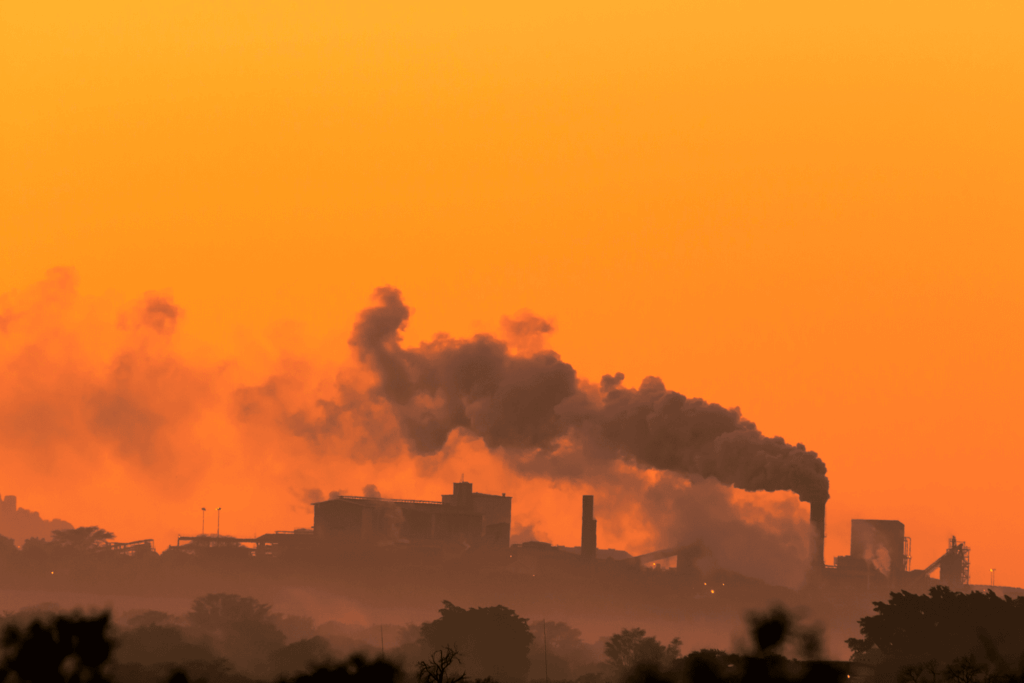
Prior to 2022, Indonesia was sending mixed signals on the coal phase-out. Coal production is always historically higher than government target limits, and PLN’s electricity business plan still accommodates plenty of new coal power plants. In September 2022, the president finally signed a groundbreaking regulation administering the early retirement of coal power plants and a moratorium for new coal power plants after 2030. Coupled with the financing mobilisation effort announced at the G20 Summit, Indonesia is ready to go beyond the high-level event and pave the way for the energy transition.
The presidential regulation (No. 112/2022) is particularly important in three key areas: coal phase-out is on the table, cross-ministries cooperation is mandatory, and there are better renewable energy tariffs. Both the ETM country platform and JETP attempt to accelerate coal overcapacity and the existing coal fleet’s early retirement, which will carve room for more renewables in Indonesia’s energy system — including solar. In fact, the solar energy potential in the country is up to 20,000 GWp, according to estimates by IESR. Solar energy has made its way into Indonesia’s decarbonization pathways for net-zero emissions by mid-century. However, mobilising finance and investment for solar is a daunting task. IESR has calculated that USD 32.9 billion by 2030 is needed for solar alone to achieve net-zero emissions by 2050.
(Fun fact: the authors of this blog both have rooftop solar installed on our homes in Indonesia)
Solar energy entered Indonesia’s mainstream policy and discourse in 2018 when the Ministry of Energy and Mineral Resources issued the inaugural regulation (MEMR Reg. No. 49/2018) for rooftop solar. Two years prior, we at IESR started advocacy work on solar energy with the strategic aim of making solar policy a priority and opening the door for other renewables. With several solar champions, we established the Indonesia Solar Energy Association and later worked on the one million rooftop solar national movement (GNSSA). Since the issuance of this regulation, rooftop solar ultimately grew in a more substantial way in Indonesia, with an annual average growth of 1,300 users and 15 MWp cumulative installations. Revisions made in 2019 that decreased parallel charge for industrial consumers, coupled with the availability of a solar leasing scheme, further boosted adoption in the segment. In 2022, we saw 2018’s ministerial regulation on rooftop solar PV being replaced with a better one (MEMR Reg. 26/2021). Unfortunately, however, the regulation is only effective on paper. Different PLN regional branches have imposed a nationwide capacity limitation, including rules that users can only have 10% to 15% (sometimes lower) of their existing power installation come from rooftop solar. This severely discourages new users and makes the economic benefits of rooftop solar unattractive.
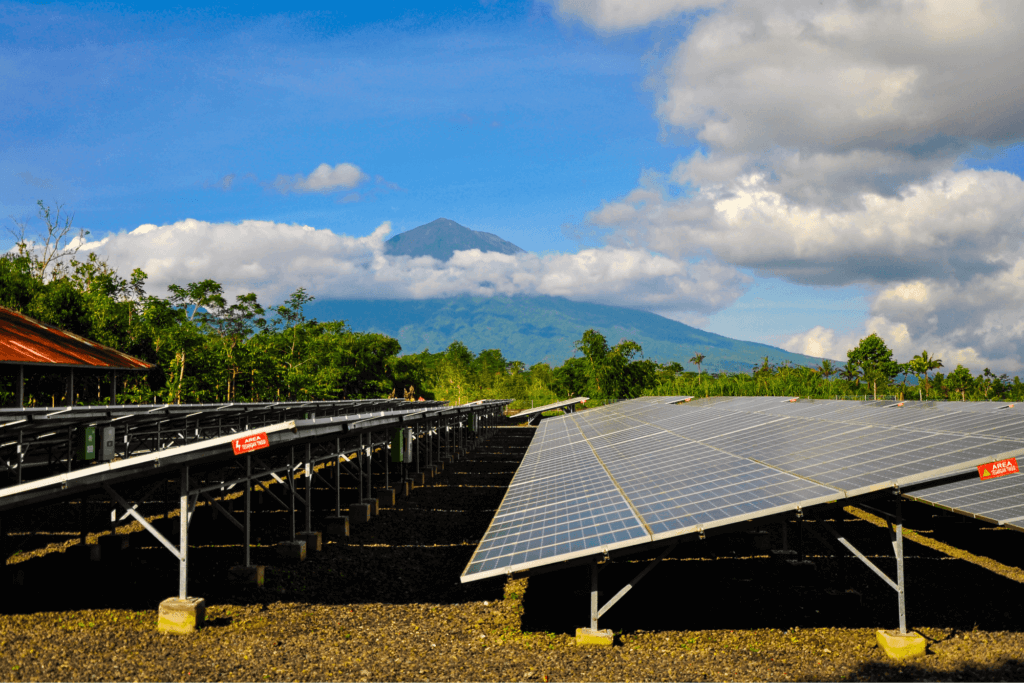
Looking forward
We believe that solar will remain a key renewable energy source for Indonesia’s decarbonization efforts. There is a solar project pipeline of 2.3 GW until 2023 that we have collected from the Indonesia Solar Summit 2022 in April, hosted by MEMR and co-hosted by IESR with support from Bloomberg Philanthropies. However, those projects are delayed and at risk of not being completed due to capacity limitations, which also puts a strategic national program of 3.6 GW rooftop solar at bay. Out of frustration, six foreign chambers of commerce (British Chamber of Commerce, European Chamber of Commerce, Japanese Chamber of Commerce, Korean Chamber of Commerce, Swiss Chamber of Commerce, and U.S. Chamber of Commerce) also sent out a joint letter addressed to President Jokowi in September, asking him to take charge and lift the hurdles to rooftop solar installation, particularly for the commercial and industrial segments. In it, they also asked that limitations be imposed at the system level, not per customer. It is recommended that the government put concentrated measures to solve this problem immediately, as there are only three effective years left to meet the renewable energy target and rooftop solar is the quickest fix.
The newly released Indonesia Solar Energy Outlook 2023 highlights floating solar’s role in driving utility solar development in Indonesia. Traditionally, allowing variable renewable energy (wind and solar) into Indonesia’s power system is often met with resistance due to overcapacity issues, scattered auctions, and site selections. The last utility solar tender held was in 2019 for two 25 MWp solar projects in Bali — its PPA was only signed in Q1 2022. As of Q3 2022, there are three floating solar projects totaling 255 MWp under development: one through G2G cooperation (Cirata 145 MWac) and two under PLN’s subsidiary equity partner auction (Singkarak 50 MWac and Saguling 60 MWac). Their bid price has set a record 85% price decrease from 2015. A full IPP scheme of multiyear, transparent auctions should be conducted to provide clear indications to investors and increase competition to get the best price and quality.
It is also pertinent to ensure the social and economic benefits of the energy transition. Only four provinces in Indonesia are responsible for nearly 90% of Indonesia’s coal production, making the people who work there vulnerable to loss of jobs and livelihoods as we transition into renewable energy. An economic transformation requires careful planning and years if not decades of preparation. Key planning aspects include the identification of transition impacts, alternative economic sectors, employment transfers, and social safety nets. With more solar projects coming, and with the potential for better policy support and implementation, solar industries could provide a central option for this transitioning workforce.



